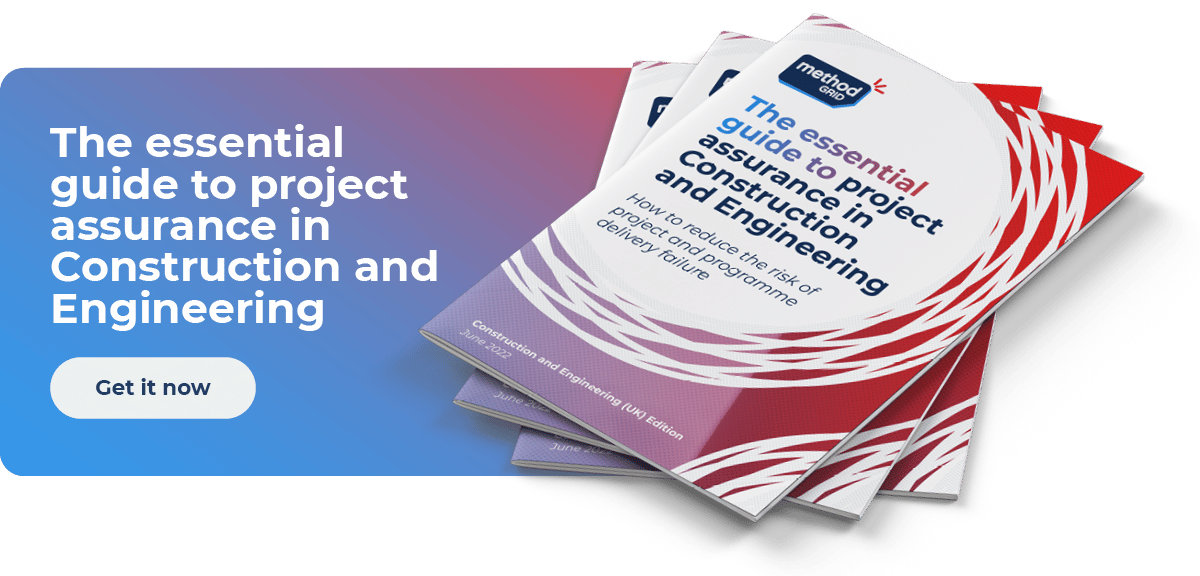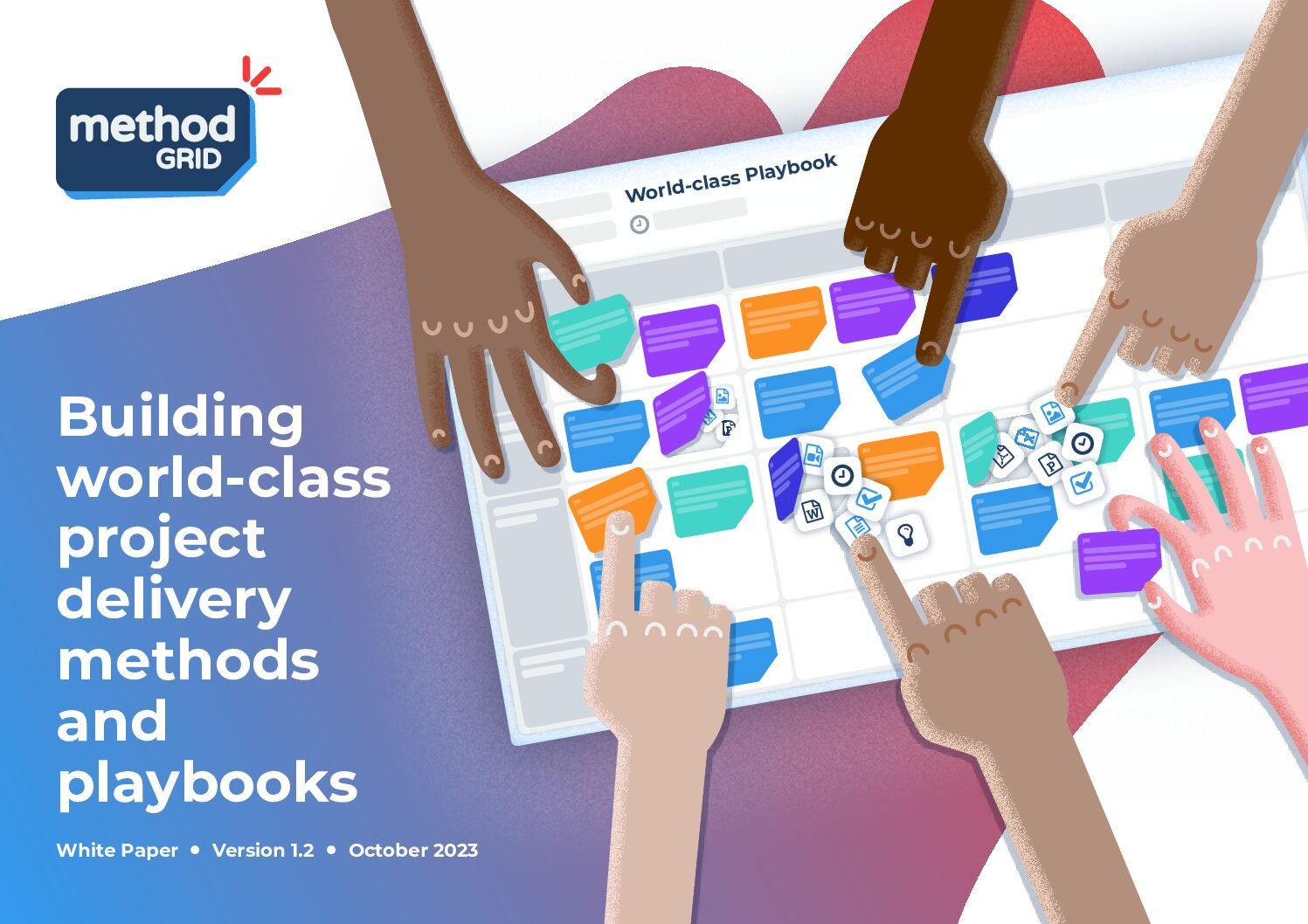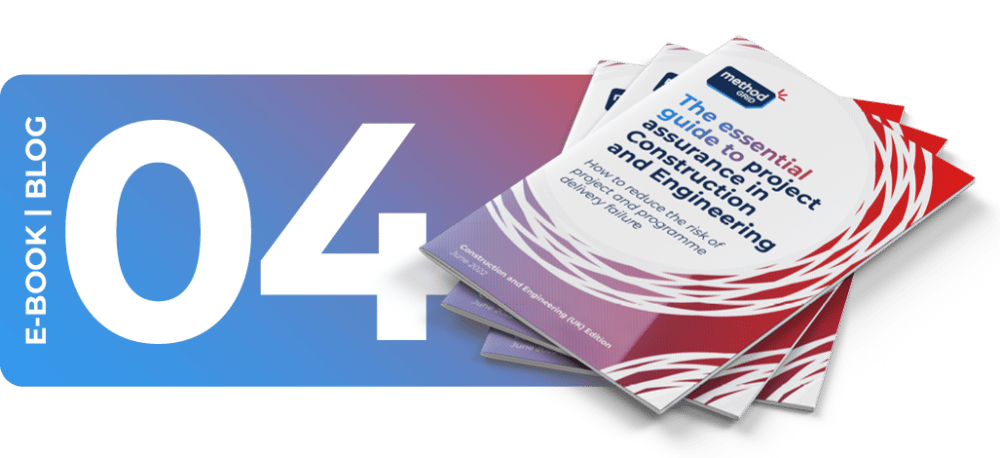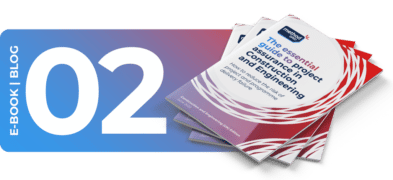Whilst – in our experience – no two transformation journeys are the same when it comes to deliberate efforts to improve a connected assurance capability, the following rubric can serve as an initial frame:
Step 1 | Undertake a P3M capability assessment and target set
Step 2 | Leaders aligned
Step 3 | Commission the capability-uplift project
Step 4 | Build independent assurance into your operating model
Step 5 | Select your technology (and partners) carefully
Step 6 | Review and refresh your P3M Toolbox
Step 7 | Upskill your P3M Community of Practice
Step 8 | Embed P3M and connected assurance into business-as-usual (BAU)
Let’s expand each in turn.
Step 1 | Undertake a P3M capability assessment and target set
As mentioned in the key principles chapter, a capability-improvement journey must start with self-awareness and acceptance of where you are now. This exercise can often benefit from expert-external support3 to avoid self-bias or a lack of knowledge with respect to what (benchmarked) best-practice actually looks like. Such assessments can also take place against established P3M maturity frameworks such as P3M3.
Proactive organisations will then use such assessment to frame future capability objectives e.g. to move from capability level X to level Y in the next 12 months.
Step 2 | Leaders aligned
The order of step one and step two can be debated – there is no right answer here. More often than not though, we see such assessments (sometimes triggered by project failure) as being the jolt that busy executive teams need to accept the reality that a committed investment/effort is required in this area.
Regardless of this timing nuance, there is no point progressing one step further until all organisational leaders accept the need to deliberately address the discovered, current state i.e. to lead, with unequivocal commitment and endurance, the capability-uplift exercise.
This point cannot be emphasised enough. As a non-negotiable necessity, a strategic initiative of this nature has to be led with walk- the-talk authenticity from the very top of the organisation. Your senior leaders will need to explicitly commission this work, understand its holistic nature and remain intimately involved (as behavioural role models) for it to be successful.
Don’t even start without this demonstrable leadership in place.
Get your copy of the complete guide to connected assurance
In this free eBook, with the experience of working with industry leaders, we explain what connected assurance is and the fundamental role it will play in the future of project and programme delivery.
Step 3 | Commission the capability-uplift project
It is somewhat paradoxical that many organisations seek to improve their project- centric capabilities via loose initiatives that aren’t well project managed.
If there is one internal initiative, you need to run as a tight project it is this one – as the basic rudiments of such project control will pay dividends with respect to the strategic pursuit you seek.
As a minimum, at this point, you need to have delivery role clarity (senior responsible owner, project manager etc.), a business case and a time-bound (say 6-12 months) plan for the concentrated effort this will involve.
Whilst the exercise has the potential to deliver a range of transformative benefits, successful implementations tend to focus on a small set of (say, 5-8) KPIs that are tracked all the way through to formal project closure and into everyday operational practice.
A capability-uplift initiative of this nature needs to coordinate multiple, mutually supporting workstreams – as required to build a sustainable, enhanced capability:
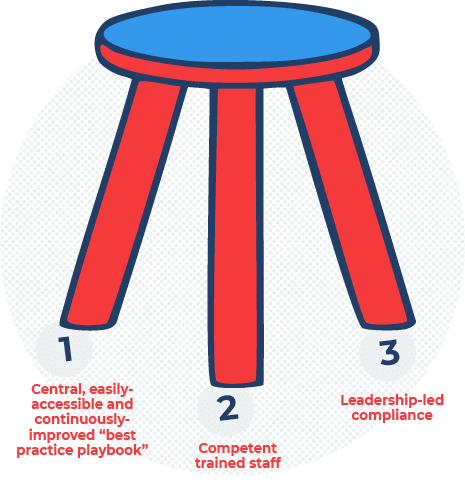
Figure: The essential three legs of any capability-uplift initiative
Your transformation project, therefore, needs to be necessarily holistic – ensuring that your firm’s wider governance set-up, policies, HR strategy (staff roles/responsibilities/recognition) and culture-led behaviours are all aligned to the ambition.
Step 4 | Build independent assurance into your operating model
Again, the chronology of this step can be debated; notwithstanding, the primary point here is to consider early how independent assurance might best be designed into your organisation’s future operating model.
For larger organisations, there is likely to already exist an obvious locus for such a capability; for example, a central quality assurance function or PMO team. In this instance, it is important to involve such staff in the capability-uplift project and to wire them into this work from the outset.
For smaller or less mature organisations, it is important to take your first steps in this regard – even if this is just the allocation of this (potentially part-time) assurance remit to the most appropriately skilled employee(s).
The fundamental principle here is to begin with the end in mind; when this deliberate capability-uplift project concludes, how is this function best embodied in future steady- state operation. Whatever the answer to that question is, the earlier such colleagues can be brought into this initiative, the better.
Step 5 | Select your technology (and partners) carefully
This is another axiomatic point.
A capability initiative of this nature will invariably require the introduction of new technology into your ecosystem – so you will need to carefully select a fit-for-purpose solution specifically tailored to your unique connected assurance requirements. You are looking for a technology that brings together the critical components (P3M assurance and information/knowledge/task management) into one solution.
Technology is a critical, enabling component in such initiatives.
Technology is, however, whilst necessary not sufficient alone to make a jot of difference. We have, indeed, previously postulated that technology might be only 20-30% of the overall answer (per the holistic point made in Step 3 with respect to project scope).
Whilst the spirit of these thoughts is the importance of self-determination in driving meaningful capability change (i.e. not having third- parties impose change upon you), well- chosen expert-facilitators are often needed.
If you need to work with software/advisory partner(s), make sure their implementation methodology understands this breadth of thinking – it is critical you are guided through this transformation with experienced, grounded practitioners who have travelled this road before.
Don’t assume that a technology vendor has these business-change capabilities; few do.
When selecting such partners, aside from manifest credentials in relevant transformation work, you should heavily weigh evidence of a highly collaborative approach. Capability uplift projects are inherently very human so you seek a partner who you can trust and who you will enjoy working with. Beyond an initial, concentrated implementation period you seek a responsive partner you can easily pick up the phone to – anytime – to discuss ongoing, operational embedment.
Collaborative partners will get this; in-and-out technology vendors do not.
Step 6 | Review and refresh your P3M Toolbox
With your project initiated, an important next step will be to review and refresh your organisation’s P3M toolbox – as an easily- accessible resource for all P3M practitioners in your organisation. This toolbox should detail your P3M (gated) delivery methodology with all the underlying guidance notes, tools, templates, examples, resource-links and knowledge assets to bring this to life.
For some teams, this is a start-from-scratch exercise; for others, an exercise to collate-and- curate a decent first version based on scattered artefacts that exist in the organisation (just not in one place) and for, the most mature, an opportunity to refresh-and-uplift tired pre- existing repositories.
Method Grid enables this structured capture of methodological toolboxes, and a consistent component of our implementation support work is this collaborative development of core master grids (methodological playbooks).
The basic unit of a connected assurance capability is a project delivery methodology. This clearly-stated approach is what is fundamentally being assured – and constantly enhanced with delivery experience – so building out a pragmatic (version 01) P3M methodological reference point is a necessary foundation.
This step can often, sensibly, involve some early project piloting in order to test and refine new methodologies (and related technology- enablement).
Step 7 | Up-skill your P3M Community of Practice
Once a P3M methodology exists (with supporting knowledge resource) – then you are set ready to train and up-skill your P3M community. In larger organisations this needs to take into account all related roles, from executive SROs, through to programme/project leaders, PMO teams and – of course – assurance teams.
This is a broad topic involving as it does the development of advocate champions and communication of the importance of the initiative alongside related user training (in your P3M standards, supporting technology etc).
With respect to new technology adoption, we strongly advocate the development of an internal, super-user cohort (via an initial train- the-trainer focus).
Beyond initial training roll-out, this step – for larger organisations – should consider the deployment of roaming-support-teams and, if not already in place, the development of a P3M community of practice (regular knowledge sharing events etc.).
Step 8 | Embed P3M and connected assurance into business-as-usual (BAU)
As your commissioned capability-uplift project comes towards its closing stages, the focus is all about ensuring the developed capabilities endure into steady state.
The most successful implementations we observe are ones where firm leaders give intelligent consideration as to how this all fits in with the related aspects of: knowledge management (KM) strategy, HR strategy and the organisation’s Quality Management System (QMS).
This step is all about considering how P3M best-practice is continuously maintained and improved in the future; specifically: what (light- touch) sign-off is required for updates to be universally deployed, who are your subject- matter-expert gatekeepers and how do you systematically sweep exemplar deliverables from completed client engagements back into the central toolbox?
Alignment with a KM strategy ensures that any implemented solution continues to live, breath and flourish in the busy, operational world beyond.
Alignment to your HR strategy entails ensuring that all HR processes (performance management – promotion and reward especially) reinforces desired behaviours i.e. compliance with corporate standards, active contribution to knowledge resources, collaborative support to peer colleagues etc.
In terms of alignment with a QMS, this form of initiative is – clearly – an ideal moment to ensure that quality objectives are clearly-stated and that your new connected assurance regime is working simpatico with such quality assurance practices.
Fundamentally, then, this step is about ensuring everyone is clear about their roles and responsibilities beyond the close of a deliberate, time-bound change initiative – to ensure that maintenance of – and continuous improvement to – your connected assurance capability lives on.